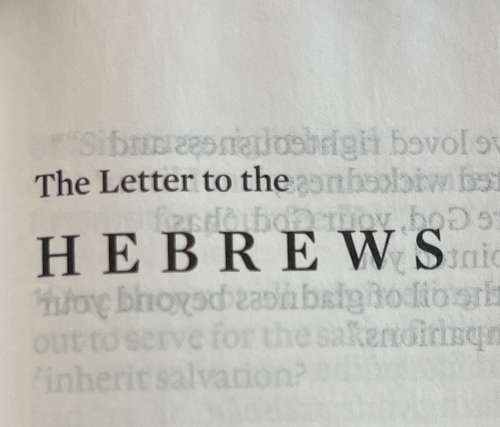Latest Blogs – What Do You See?
- We’re Supposed to Stick Together – 2/24/23
- The Most Underrated Verse in Holy Scripture? – 2/17/23
- The Difference Between Evangelism and Shepherding – 2/10/23
- Roadkill – 2/3/23
Context is key!
The Difference Between Exposition and Parenesis
The goal of exposition is to explain something (e.g., when a NT writer explains an OT passage). The goal of parenesis is to persuade (e.g., when a writer knits together Biblical doctrines with circumstances to encourage someone to think or act a certain way).
The Purpose, Plan and Genre of Hebrews
The overarching theme of the Book of Hebrews is parenetic (persuasive). Biblical and theological exposition was subordinate to the writer’s parenetical “word of exhortation”, which was meant to induce an emotional response. It is a homily (sermon), laced with rhetorical language, from a shepherd to a group of well-known sheep for the sake of encouragement. (Heb 13:22; 1:1-4; 1:5-4:16; 5-6; 7:1-10:18; 10:19-13:25)
Rhetoric
The art of effective or persuasive speaking or writing, especially the use of figures of speech and other compositional techniques.
The Rhetoric in Hebrews
- Prologue: v1:1-4
- Thematic Statement: v1:5-4:16
- Statement of Plausibility: ch5-6
- Demonstration of Proof: v7:1-10:18
- Closing Inspiration: v10:19-13:25
Jn 4:13-14
Jesus said to her, “Everyone who drinks of this water will be thirsty again, but whoever drinks of the water that I will give him will never be thirsty again. The water that I will give him will become in him a spring of water welling up to eternal life.”
The Rhetoric in Hebrews
- Prologue: v1:1-4
- Thematic Statement: v1:5-4:16
- Statement of Plausibility: ch5-6
- Demonstration of Proof: v7:1-10:18
- Closing Inspiration: v10:19-13:25
